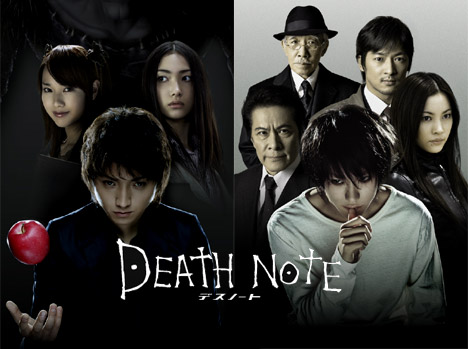I got to know about the Death Note movies sometime in 2009, a good three years after the first film came out. The only other Japanese film I had seen at that time was perhaps Ringu (the original version of The Ring) and Ju-on (the original version of The Grudge). This is an explanation of the two Death Note movies.
Hollywordle – Check out my new Hollywood Wordle game!
Where To Watch?
To find where to stream any movie or series based on your country, use This Is Barry’s Where To Watch.
Oh, and if this article doesn’t answer all of your questions, drop me a comment or an FB chat message, and I’ll get you the answer. You can find other film explanations using the search option on top of the site.
I believe I was late to the whole Anime / Manga business. I did not know how awesome they were. Of course I had watched Voltron growing up but the stuff they made for grown ups, I hadn’t watched. Death Note was my first view into the awesomeness of the Live Action world.
The first Death Note has some incredible series of events. The basic premise is about a college kid, Light Yagami, who gets his hands on a Notebook from a Death God. Shinigami, that’s the word for Death God, the Reaper. The names of people he writes in this book die in 60 seconds by heart attack. If he chooses, he can provide details leading to the death within 6 min 40 sec and that will happen too. Light begins to righteously kill thugs and takes on the name Kira
Light’s dad is the Soichiro Yagami who is the lead cop investigating the case of Kira.
In comes L, a detective who is as brilliant as Kira. And the movie goes into a battle of wits between Kira and L, who don’t know each other by face or name.
The second part sees another death note which is in the possession of Misa Misa, an actress. The two parts come together and end very well. I liked the movie’s ending better than the anime. Yeah, I said it. Movie was better than Anime. Now you can judge me.
If you haven’t watched the movie, I’d suggest you don’t read further as it has spoilers.
Ending Explained
Death Note Part 1
If you are wondering what happened in the end, how Kira gets Naomi to kill Shiori, here’s what happens. Death Note only helps Kira write down instructions about a person’s death. He can’t really control a person and make her kill someone. However, what he does is two things:
1) He makes a death note entry for Naomi stating that she commits suicide by firing two bullets, one as Shiori and the other at her head.
2) He also makes an entry for Shiori stating that she will be killed by a bullet. He ensures that he mentions the timing of Naomi’s firing of the bullet and Shiori getting shot to be the same.
This ensures that Naomi shoots Shiori. Kira uses a nice loop-hole.
Frankly, the treatment of these sequences of events was better handled in the movie than in the anime. This was a grand way to end the first movie and lead it on to the next part.
Death Note Part 2 : The Last Name
The second part’s ending was better handled than the Anime too. Having L killed and then he getting replaced by two smaller kids was a bit of an unnecessary drag in the Anime. The movie has L neatly tricking Kira to goof up and Ryuk screws Kira over too, good stuff.
Here’s what happens, L writes his name in the Death Note mentioning he will die 23 days later. Once a death is written, it cannot be undone. Kira doesn’t know this, he uses the Death God to write the names of L and Watari in the book. Since L is already destined to die only 23 days later, he merely acts as though he’s having a heart attack. Light, assuming that he has won, ends up saying a lot of things that is a significant confession for arrest. The whole task force ends up seeing this. After L’s apparent death, Light uses a Death Note, which is fake, to write the death of his father. That doesn’t work, obviously.
What L is unable to predict is that Light would use the Death God to write the names. This results in Watari dying. It is hinted that Watari was L’s father. L, after 23 days, dies too.

Barry is a technologist who helps start-ups build successful products. His love for movies and production has led him to write his well-received film explanation and analysis articles to help everyone appreciate the films better. He’s regularly available for a chat conversation on his website and consults on storyboarding from time to time.
Click to browse all his film articles

